Cystoid Macular Edema treatment in Delhi is safe and easy to process. There is abundant of Ophthalmologist and hospitals that treat this eye problem. It occurs when fluid accumulates in the macula (a small but crucial part of the retina responsible for central vision). This build-up of fluid can lead to swelling, distorting the macula and impairing vision. The macula is essential for tasks that require sharp, detailed vision, such as reading, driving, and recognizing faces.
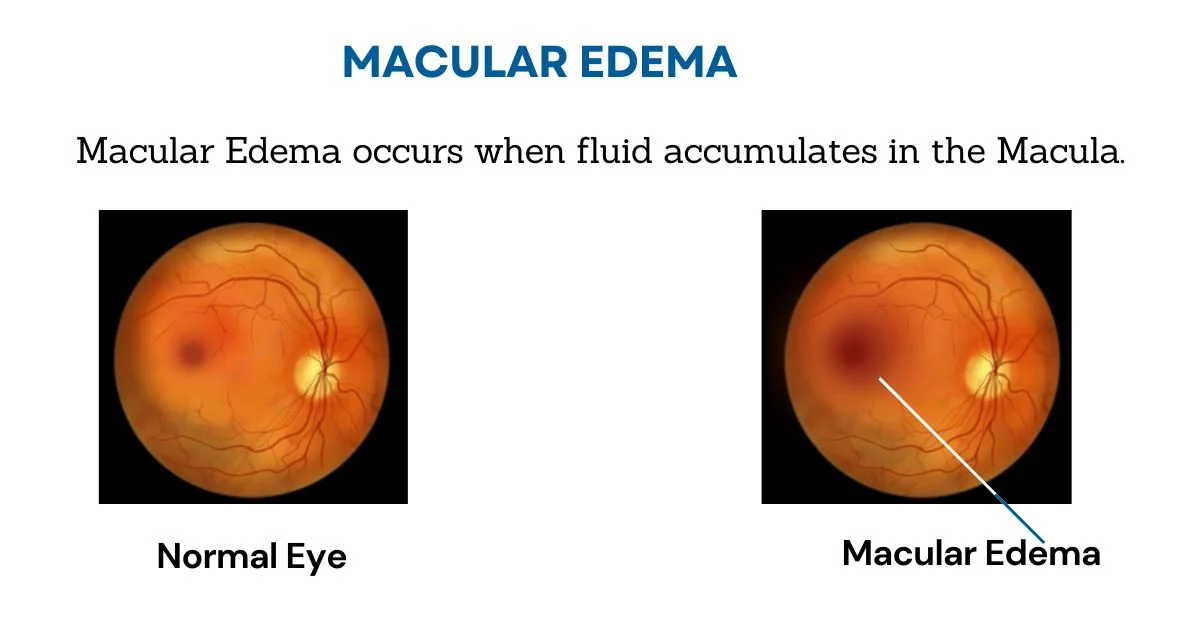
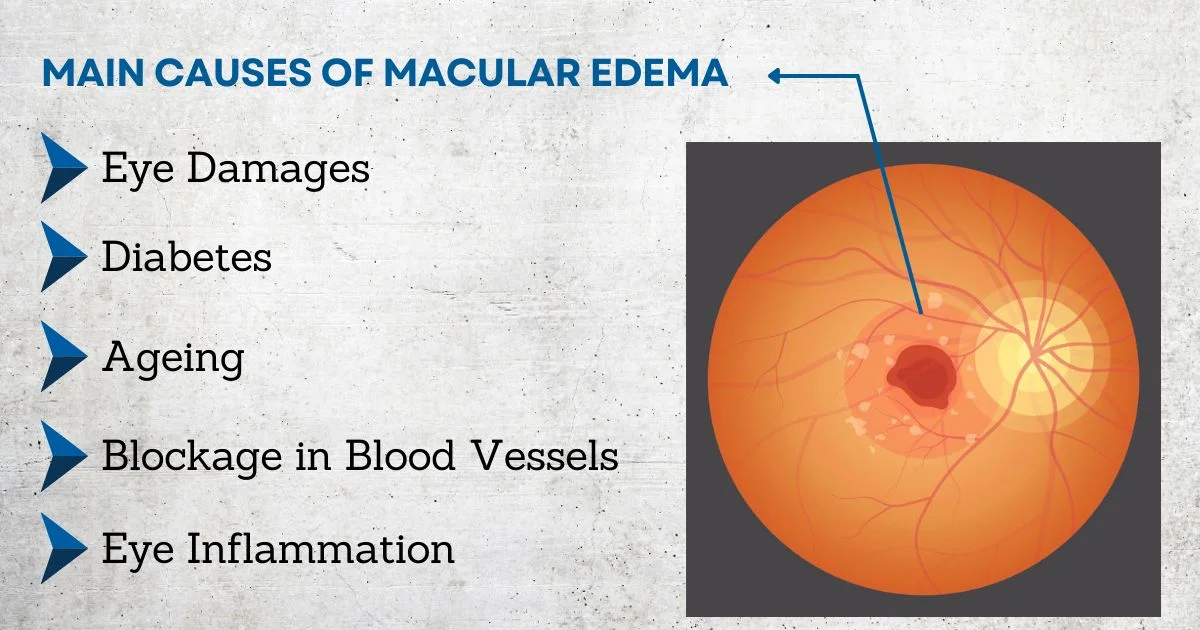
1. Blurry Vision: Things you look at may seem unclear or fuzzy, like trying to see through a misty window.
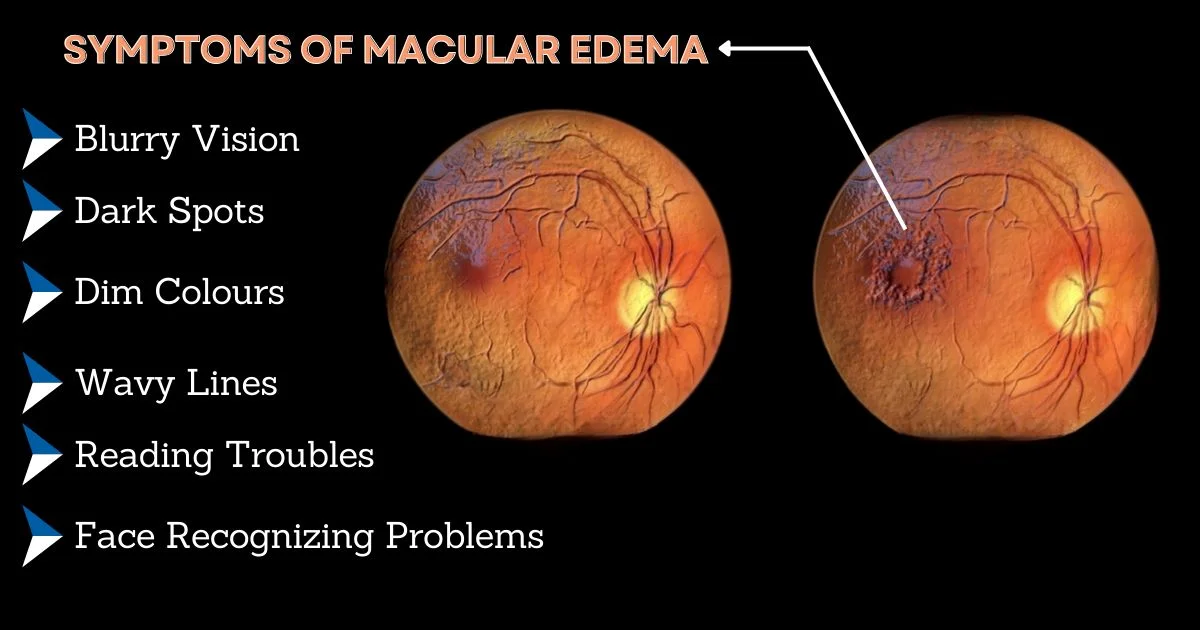
2. Dim Colors: Colors might not appear as bright or vibrant as they used to; they may look faded or dull.
3. Reading Troubles: Reading small print or focusing on words can become difficult, making it hard to enjoy books or read signs.
4. Wavy Lines: When you see straight lines, like those in a book or on a grid, they might appear bent or wavy.
5. Dark Spots: You might notice dark or empty spots in your vision, like missing pieces in a puzzle.
6. Trouble Recognizing Faces: It can become challenging to recognize people's faces, especially in detail.
Prompt diagnosis is essential for effective treatment. Ophthalmologists employ several methods to diagnose it:
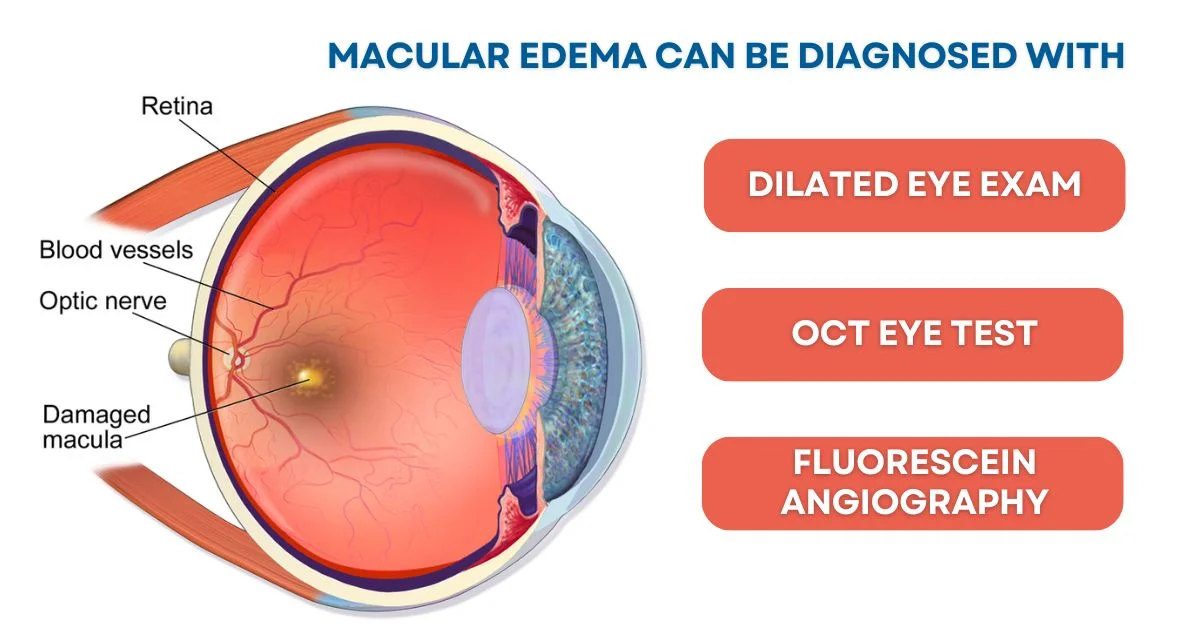
1. Dilated Eye Exam: The eye specialist uses eye drops to dilate the pupil and examines the retina for signs of swelling or fluid accumulation.
2. Optical Coherence Tomography (OCT): This test is a non-invasive imaging test. It provides high-resolution images of the retina to see if anything's wrong.
3. Fluorescein Angiography: This test involves injecting a fluorescent dye into a vein in your arm. Then photos of the retina are captured when the dye circulates. It helps identifying blood vessel abnormalities and leakage.
The Cystoid Macular Edema treatment depends on its underlying cause and severity. Here are some common treatment options:
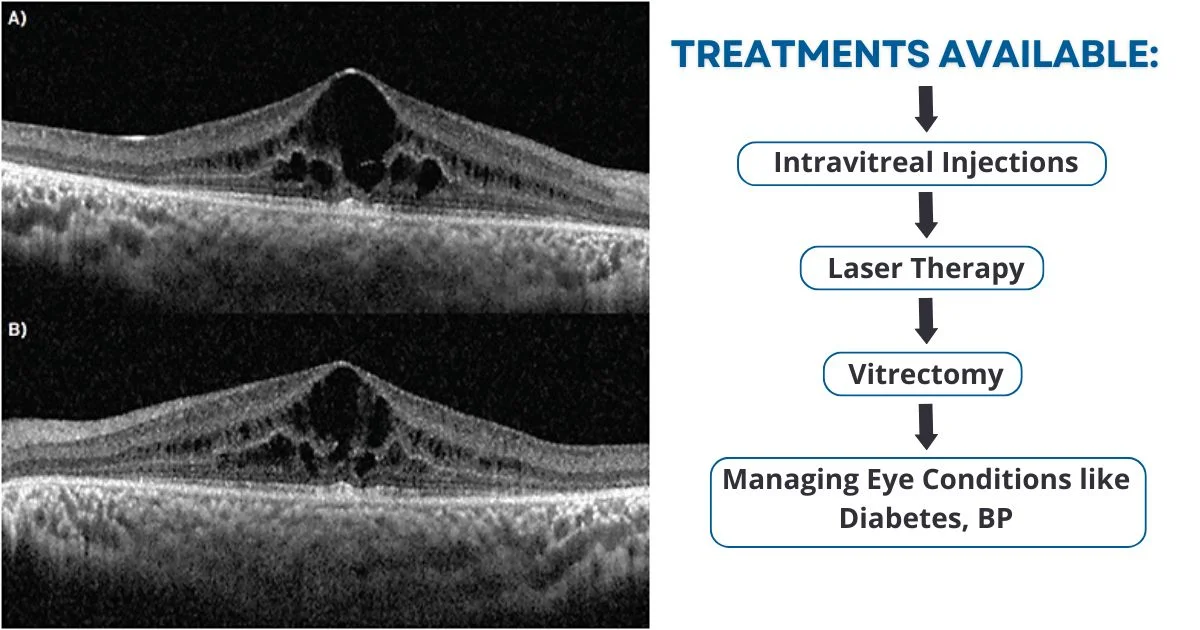
1. Intravitreal Injections: Medications, such as anti-VEGF drugs or corticosteroids, can be injected directly into the eye to reduce inflammation and fluid accumulation.
2. Laser Therapy: Laser treatment, known as photocoagulation, may be used to seal leaking blood vessels in the retina.
3. Vitrectomy: When necessary, vitrectomy can be performed to extract vitreous gel and replace it with saline solution.
4. Manage Underlying Conditions: In cases associated with diabetes or high blood pressure, managing these conditions effectively is key to avoiding further damage to vision.
Prevention plays a significant role in maintaining eye health. Here are some strategies to reduce the risk:
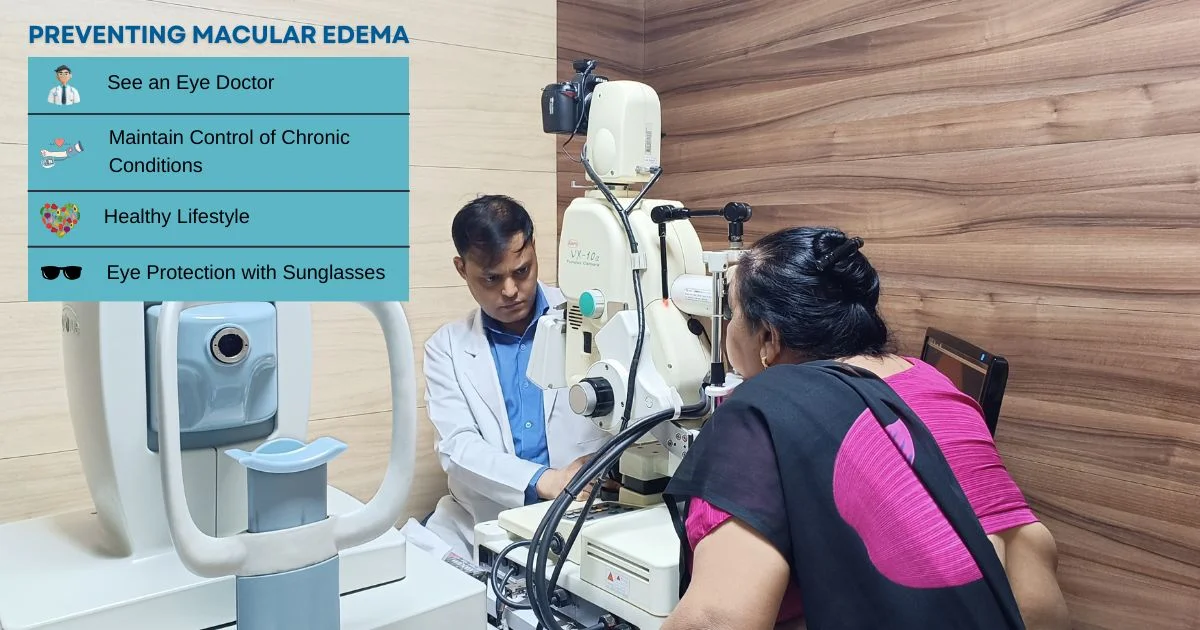
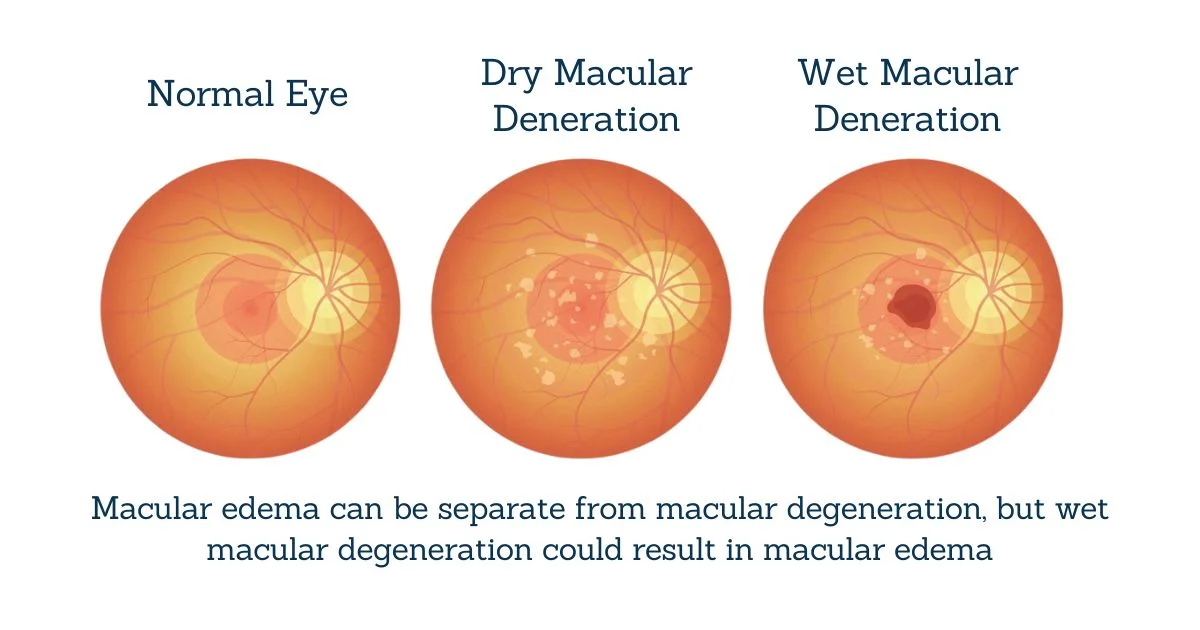
| Aspect | Age-Related Macular Degeneration (AMD) | Macular Edema |
|---|---|---|
| Definition | Progressive eye disease affecting the macula. | Accumulation of fluid in the macula. |
| Primary Affected Group | Older adults, typically aged 50 and above. | Can affect individuals of various ages. |
| Types | Dry AMD (slow progression) and Wet AMD (rapid onset). | Various causes, including diabetes. |
| Age-Related Factor | Primarily associated with aging. | Not strictly age-related. |
| Symptoms | Blurred or distorted central vision, wavy lines. | Blurred central vision, dark spots. |
| Common Causes | Genetic factors, smoking, age, diet. | Diabetes, retinal vein blockages, etc. |
| Treatment | Management of risk factors, laser therapy, injections. | Address underlying cause, such as diabetes. |
| Vision Loss Speed | Can progress slowly (dry AMD) or rapidly (wet AMD). | Varies depending on the underlying cause. |
| Prevention Focus | Lifestyle changes, dietary improvements. | Management of underlying conditions. |
Intravitreal injections are like special shots, but not the kind that hurt. These shots go right into your eye, but don't worry, it's done by experts like Dr. Rajeev Jain who make sure you don't feel pain.
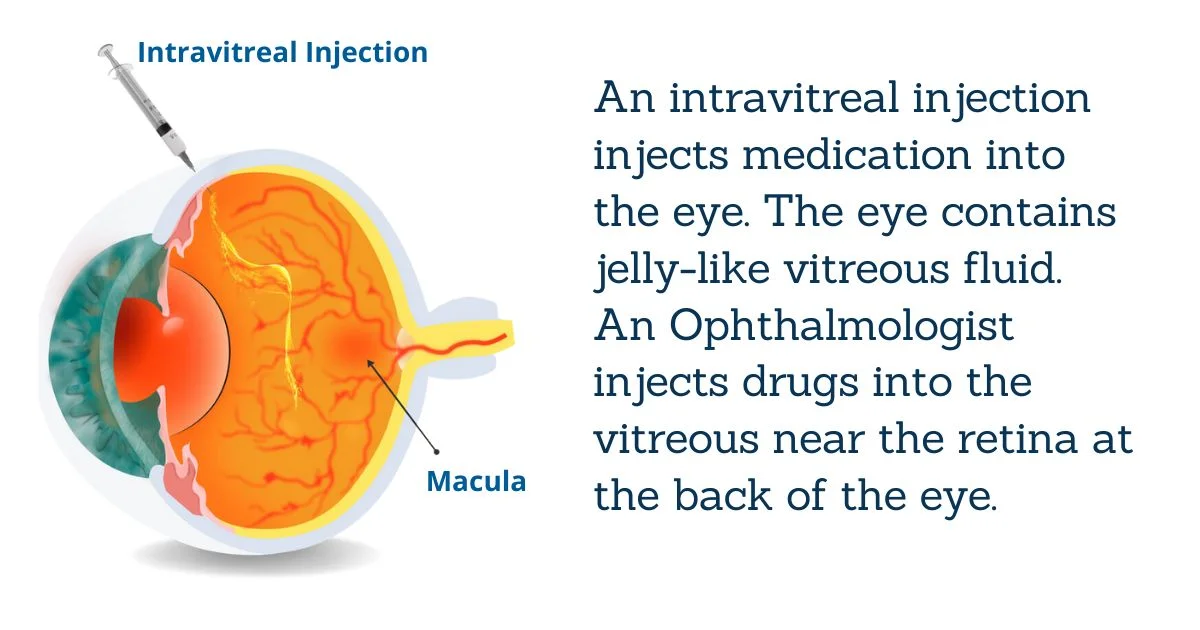
Now, here's the magic: these injections carry medicine that can help fix the problem inside your eye. They target the place where the fluid is building up and causing the blurriness.
Think of it like having a superhero medicine that fights the bad stuff in your eye and helps your vision get clearer. It's a big deal because it can work really well, and you won't have to take lots of pills or have surgery.
So, intravitreal injections are like tiny superheroes for your eye, helping you see better when you face this eye problem.
If you suffer from this eye problem, There could be tiny blood vessels or other structures within your eye that can cause problems and are making your vision blurred. The goal of laser therapy is to identify these troublesome areas and then gently destroy the area with precisely focused lights.
It's like having a small repair team within your eye, utilizing laser beams to fix parts that are the cause of the issue. The greatest part is that you'll never feel anything as this takes place.
The treatment of lasers can be described as having an eye doctor superhero that uses tiny beams light to treat the issues that make your vision blurred, assisting you to see clearly.
Ans: The best treatment for cystoid macular edema depends on the individual case. It could include intravitreal injections, laser therapy, or oral medications. The best treatment is provided as per the health condition of the patient.
Q.2 How long does it take to treat cystoid macular edema?Ans: The duration of cystoid macular edema treatment varies. It can take weeks to months, depending on the chosen treatment and how well the individual responds. Regular follow-ups with the eye doctor help monitor progress.
Q.3 What is the drug of choice for cystoid macular edema?Ans: The drug of choice often includes anti-VEGF agents, which are injected directly into the eye. These medications help reduce swelling in the macula and improve vision.
Q.4 What is the first-line treatment for macular edema?Ans: In many cases, the first-line treatment for macular edema involves intravitreal injections. These injections deliver medication directly into the eye, targeting the swelling and promoting better vision.
Q.5 Can macular edema be cured?Ans: While it may not always be fully cured, effective treatments can manage and improve macular edema. Early detection and appropriate interventions, such as injections or laser therapy, contribute to better outcomes. Regular eye check-ups play a crucial role in monitoring and adjusting the treatment plan.
Copyright © 2025 | Save Sight Centre | All Rights Reserved.